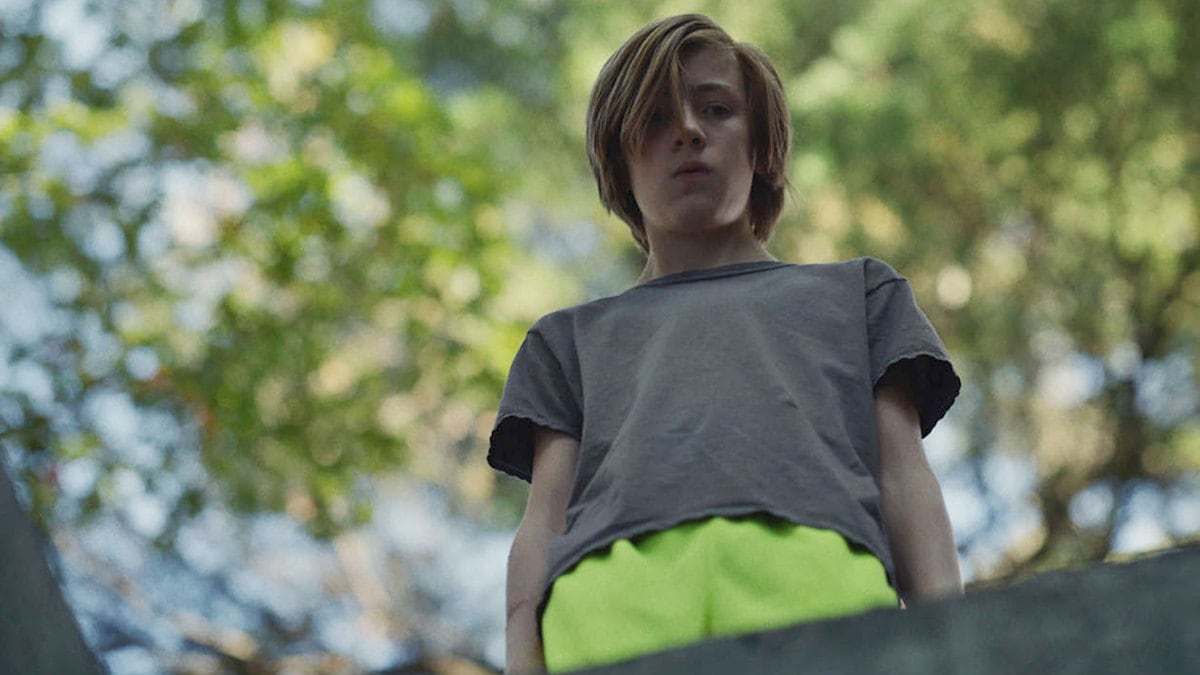Midway through John and the Hole, a sparse, stylish psychological thriller, the 13-year-old John (Charlie Shotwell) stands in his family’s pool beside a friend. “When I start thrashing, leave me a little longer,” the friend instructs him. John proceeds to push the boy underwater and, in one long take, we watch with growing discomfort as John keeps him there for 20, 30, 40 seconds. Even when the boy starts flailing wildly, splashing the water above, John commits to the experiment, prolonging his friend’s sensation of drowning.
At this point in the film, which premiered Friday at the Sundance Film Festival, John is the sole occupant of his vast, ultra-modern home in the woods. That’s because several days earlier, John drugged his family and dragged them into a deep hole in the ground, leaving them with no way to climb out.
Based on a short story by Argentine novelist and Birdman screenwriter Nicolás Giacobone, John and the Hole contains few surprises beyond its weirdly disturbing premise, much of which is laid out in its pithy title. John finds a hole. John dumps his family in the hole. John plays out his Home Alone fantasy while his mother (Jennifer Ehle), father (Michael C. Hall) and sister (Taissa Farmiga) shiver and go hungry. But the director Pascual Sisto, an installation artist, stretches the thumbnail of a plot into a film that quakes with intrigue and dread.
When the film begins, John seems like a normal kid, albeit somber and subdued. His parents are affluent, sipping red wine at dinner and buying John an expensive drone as a gift. But soon, John’s quietness turns to oddness. Sifting through his parents’ medicine drawer, he comes upon a sleeping pill that he finds he can crush up and dissolve in liquids. He tests the pill on himself, and then on his unsuspecting gardener, before one evening secretly feeding it to his entire family at dinner. When they’re passed out that night, he uses a wheelbarrow to haul them one by one into the nearby pit.
The hole was supposed to be a bunker—the project was abandoned, his parents tell him, when the company ran out of money for building. When his family awakens at the bottom of the shaft the next morning, they find there’s no way to exit on their own.
Meanwhile, alone in his house, John embarks on a kind of fantasy of adulthood. He teaches himself to drive his dad’s car, which he takes to an ATM machine to withdraw hundreds of dollars in cash—though the only thing he can think to spend it on is a mountain of fast food. Without his parents to supervise, he drags the family’s TV up to his bedroom and munches on chicken nuggets while playing video games. Eventually, John invites a friend over for the weekend, and the pair become obsessed with pushing themselves to the brink of death in the pool.
Their macabre drowning game aligns with John’s parallel experiment: How long can he keep his family underground before they fail to survive?
The movie’s most distressing scenes occur underground, as Sisto chronicles John’s family’s adjustment to their new existence. At one point, John’s sister instructs her parents to look the other way as she squats to void her bowels, before wrapping the excrement in a plastic bag like you would for a dog. Later, after several days without food, John’s dad observes, “I think it’s the first time I’ve been hungry, like really, really hungry.” They’re fascinating moments, hinting at the ways in which John’s experiment has already changed his family: They’re learning what it’s like to live without the easy pleasures of wealth.
Without spoilers, the movie never veers into exceptionally alarming territory—and instead, actually ends up falling into a fairly conservative ending. It’s disappointing to watch a film that so craftily destabilizes the reliance on the nuclear family ultimately surrender to the pull of convention. Once it becomes clear that what John craves is not freedom or novelty but simply his family’s attention and respect, the film’s morbid premise is drained of much of its peculiar power.
The movie’s saving grace is its visual style—a richness of image and mastery of tone that make “John and the Hole” a worthy entry into the psychodrama genre. There are some viscerally upsetting moments, particularly when Sisto veers away from John and spends time with his mother, father and sister, who scour for food scraps as they lay in the darkness, caked in mud. But mostly, the movie trades in anxiety, and once it’s over, you’re likely to be as relieved as John’s family that you emerged in one piece.

